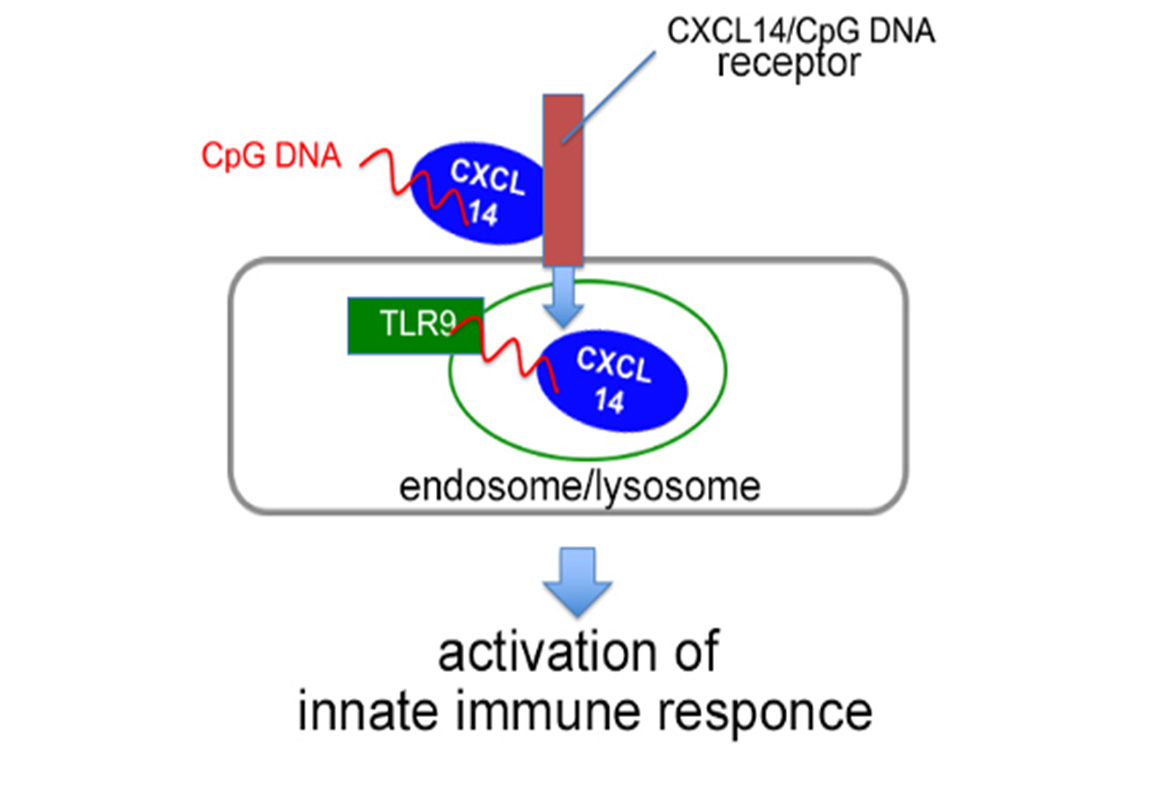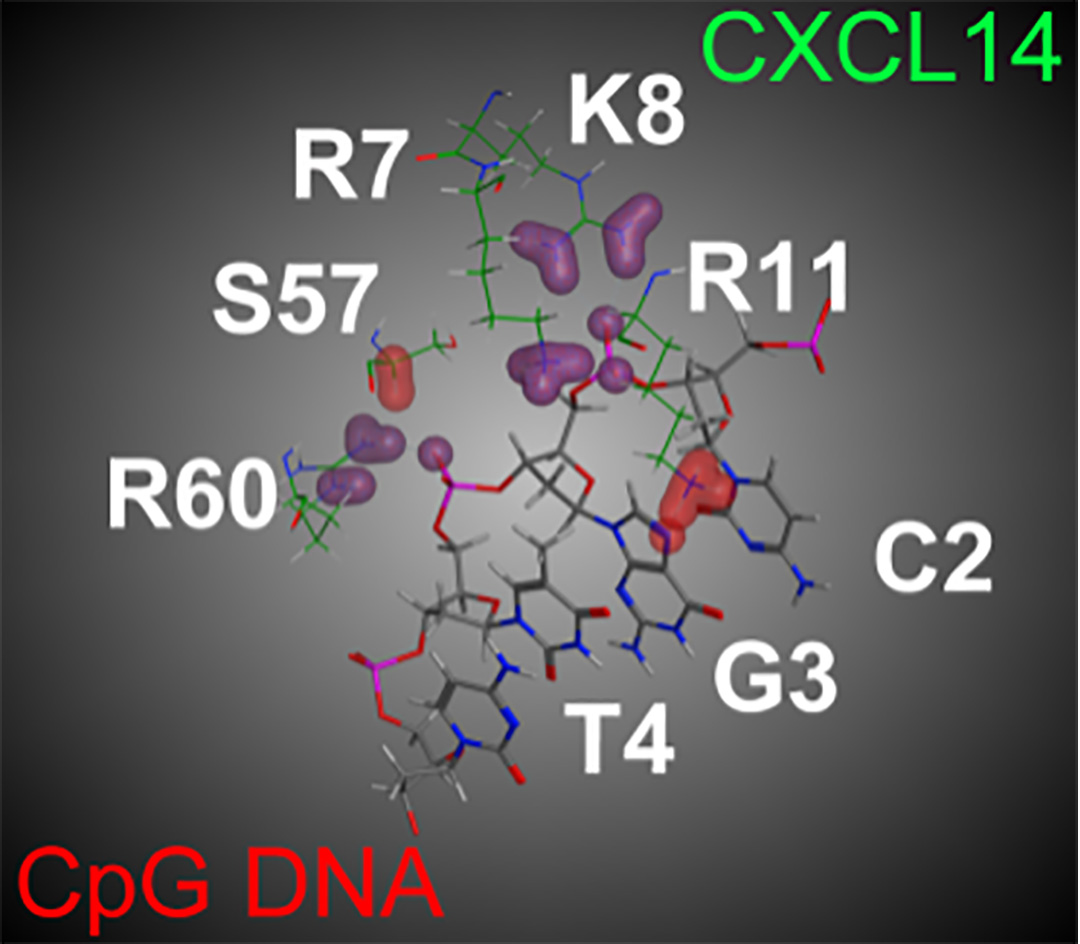Stem cell project in our institute revealed the mechanism of activation of innate immunity by chemokine/DNA complex. This work was done by collaboration with the University of Tokushima. We published it in the American scientific journal.

Chemokines (Note 1) are secretory proteins that promote cell migration and are known to contribute to inflammatory reactions by attracting leukocytes. In addition to the general function of chemokines, a study by our stem cell project in 2017 revealed that CXCL14, a type of chemokine, binds to a DNA sequence that is abundant in bacterial DNA called CpG DNA (Note 2). CXCL14/CpG DNA complex facilitates uptake into dendritic cells (Note 3), and significantly enhances the inflammatory response. As the results, we discovered a new function that induces innate immunity (Note 4). However,it remained unclear whether this function was common to chemokines and by what mechanism the uptake enhancement occurred.
In this study, it was clarified that CXCL4, which is the same CXC type chemokine as CXCL14, has the same function as CXCL14 and enhances the activation of dendritic cells by CpG DNA. In addition, CXCL14 has both CpG DNA and a binding domain to cell surface receptors, and the CXCL14 / CpG DNA complex is incorporated into dendritic cells by the clathrin-dependent endocytosis pathway (Fig.1). In addition, the binding of CXCL14 / CpG DNA was analyzed by simulation, and it was shown that multiple amino acids on the N-terminal side and C-terminal side of CXCL14 work cooperatively to stabilize the binding (Fig. 2). These results revealed the non-classical function of chemokines to activate innate immunity by binding to CpG DNA.

Fig.1 Mechanism of innate immune activation of CXCL14 and CpG DNA
CXCL14 has both CpG DNA and a binding domain to the cell surface receptor. The CXCL14 / CpG DNA complex is endocytosed into dendritic cells to activate the CpG DNA receptor Toll-like receptor 9 (TLR9).

Fig.2 Simulation of binding mode between CpG DNA and CXCL14
Simulations revealed that the phosphate group of CpG DNA is recognized by the amino acids (R7, K8, R11) of CXCL14 on the N-terminal side and the amino acids (S57, R60) on the C-terminal side. These results suggested that the amino acids on the N-terminal side and the C-terminal side work cooperatively
Both CXCL14 and CpG DNA are known to be associated with enhanced cancer immunity. In addition, the activation of dendritic cells by CXCL14 and CpG DNA shown in this study is expected to function as a vaccine adjuvant that enhances the efficacy of the vaccine. If the cooperative action of CXCL14 and CpG DNA is further elucidated using the results based on this research, it may lead to the development of more efficient cancer immunotherapeutic agents and vaccine adjuvants.
It was supported by the Japan Society for the Promotion of Science (JSPS) Grant-in-Aid for Scientific Research.